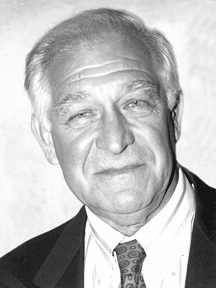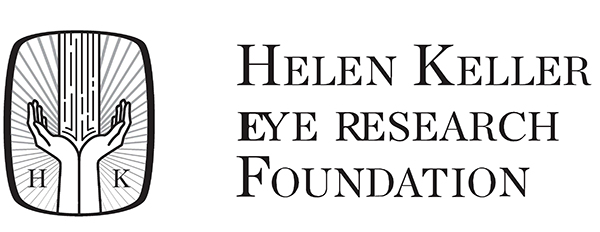 Dr. Endre A. Balazs (1920) received his medical training in Budapest, Hungary. At the invitation of Professor Theodor Huzella, Head of the Department of Histology and Embryology, as a first year medical student, he began research on histochemistry and tissue culture, and presented the results of his research on plant polysaccharides at an International Conference on Anatomy and Histology held in Budapest in 1938. Balazs then started his research on animal polysaccharides – mostly hyaluronan, and published several papers before receiving his doctoral degree in medicine (1942). In 1947, he was invited by the organizers of the Sixth International Congress of Cytology held in Stockholm, Sweden to report on his research on the effect of hyaluronan on cell multiplication in tissue cultures, which was the only lecture at the Congress on hyaluronan.
Dr. Endre A. Balazs (1920) received his medical training in Budapest, Hungary. At the invitation of Professor Theodor Huzella, Head of the Department of Histology and Embryology, as a first year medical student, he began research on histochemistry and tissue culture, and presented the results of his research on plant polysaccharides at an International Conference on Anatomy and Histology held in Budapest in 1938. Balazs then started his research on animal polysaccharides – mostly hyaluronan, and published several papers before receiving his doctoral degree in medicine (1942). In 1947, he was invited by the organizers of the Sixth International Congress of Cytology held in Stockholm, Sweden to report on his research on the effect of hyaluronan on cell multiplication in tissue cultures, which was the only lecture at the Congress on hyaluronan.
At the invitation of Professor Hjalmar Holmgren, the Head of the Department of Experimental Histology at the Karolinska Institute, he immigrated to Sweden and continued his research on hyaluronan, wound healing, and the structure of hyaluronan and its role in tumor development.
In 1950, Professor Edwin Dumphy, head of the Department of Ophthalmology at Harvard Medical School, invited Balazs to Boston to organize the research laboratory for the newly established Retina Foundation, which was affiliated with Harvard, and to teach the structure and function of the connective tissues in the eye at an international course for young ophthalmologists at Harvard Medical School. Balazs’ research focused on the simplest and largest connective tissue in the human body, the vitreus. For the next 15 years, he and his coworkers concentrated on the structure and function of the vitreus in humans, monkeys and other animals, such as birds and fish. He discovered that the cells in the vitreus produce hyaluronan and called these cells hyalocytes. He also found two new complex polysaccharides in the fish eye, both containing hyaluronan – and called them ichthyosans.
In 1962, the new building for the Retina Foundation, designed and built under his direction, was opened under the name of The Institute of Biological and Medical Sciences of the Retina Foundation. Its research mission covered a broader field than ophthalmic research. In 1965 the governing board of the Retina Foundation decided to separate the basic research under the name Boston Biomedical Research Institute under the direction of Balazs and to continue the Retina Foundation under the direction of Charles Schepens (later it was renamed to The Charles Schepens Eye Institute).
In the new Institute, Balazs extended his research on the role of hyaluronan into the joints and skin. As a result, in the late 1960s, he discovered that hyaluronan could be used as a replacement for vitreus as a viscoelastic protective substance for the corneal endothelium and other tissues during surgical procedures. Parallel with this investigation, in the 1960s he found that viscoelastic hyaluronan could be used to replace the pathological synovial fluid of the joint. In some cases of traumatic arthritis and osteoarthritis in humans and in horses, hyaluronan injected into the joints produced long lasting pain relief. To develop the final highly purified hyaluronan for both therapeutic purposes, he started a small manufacturing company (Biotrics, Inc.) under his administration and financial support. In 1976 a Swedish drug company, Pharmacia, took over the manufacturing and worldwide marketing of the highly purified, high molecular weight hyaluronan for use as therapeutic agent in ophthalmic surgery and for pain relief in arthritis. This was the first use of hyaluronan for therapeutic purposes.
In 1975, the College of Physicians and Surgeons of Columbia University New York invited Balazs to direct the Research Division of the Eye Institute at the University. As the Malcolm P. Aldrich Professor, he continued his research on hyaluronan and its therapeutic uses until his retirement from this position in 1985.
In the early 1980s, with Janet Denlinger, his wife and André Balazs, his son, he started Biomatrix, Inc., a biotechnology company in New Jersey. The company, under Balazs’ leadership, developed new hyaluronan products for therapeutic use in the joint and skin, and for drug delivery and tissue augmentation. During the next 18 years, Biomatrix developed and marketed worldwide six hyaluronan products for various therapeutic uses. In 2000, Biomatrix was sold to Genzyme, Inc., and Balazs started, with Janet Denlinger, a charitable and non-profit foundation, the Matrix Biology Institute, to continue his research and development of hyaluronan and its derivatives.
Balazs spent considerable time initiating and developing international organizations. In 1962 he initiated and co-founded with Hugh Davison the first journal established for basic eye research, called Experimental Eye Research. He was Editor-in-Chief of this journal for 29 years. In 1974, at his initiative, the International Society for Eye Research was established. He was first its Executive Secretary and later its President. In 2004, at his initiative and organization, the International Society for Hyaluronan Sciences was founded. Currently, he serves as its President.

